Atefeh Khoshkhahtinat
Laplacian-guided Entropy Model in Neural Codec with Blur-dissipated Synthesis
Mar 24, 2024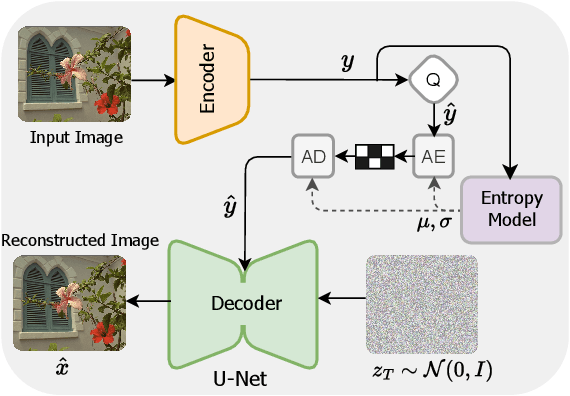
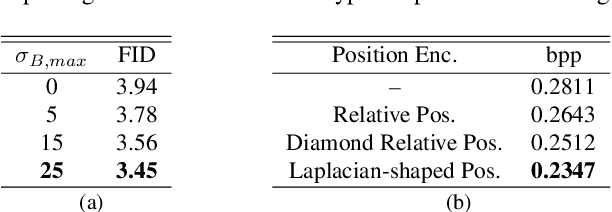
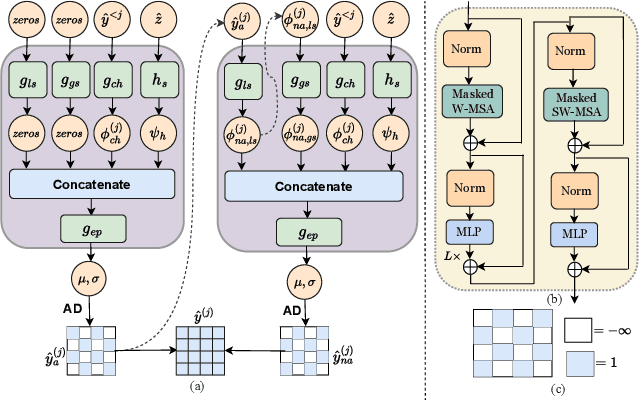
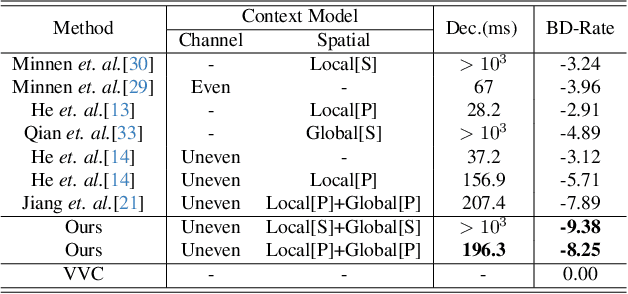
Abstract:While replacing Gaussian decoders with a conditional diffusion model enhances the perceptual quality of reconstructions in neural image compression, their lack of inductive bias for image data restricts their ability to achieve state-of-the-art perceptual levels. To address this limitation, we adopt a non-isotropic diffusion model at the decoder side. This model imposes an inductive bias aimed at distinguishing between frequency contents, thereby facilitating the generation of high-quality images. Moreover, our framework is equipped with a novel entropy model that accurately models the probability distribution of latent representation by exploiting spatio-channel correlations in latent space, while accelerating the entropy decoding step. This channel-wise entropy model leverages both local and global spatial contexts within each channel chunk. The global spatial context is built upon the Transformer, which is specifically designed for image compression tasks. The designed Transformer employs a Laplacian-shaped positional encoding, the learnable parameters of which are adaptively adjusted for each channel cluster. Our experiments demonstrate that our proposed framework yields better perceptual quality compared to cutting-edge generative-based codecs, and the proposed entropy model contributes to notable bitrate savings.
Neural-based Compression Scheme for Solar Image Data
Nov 06, 2023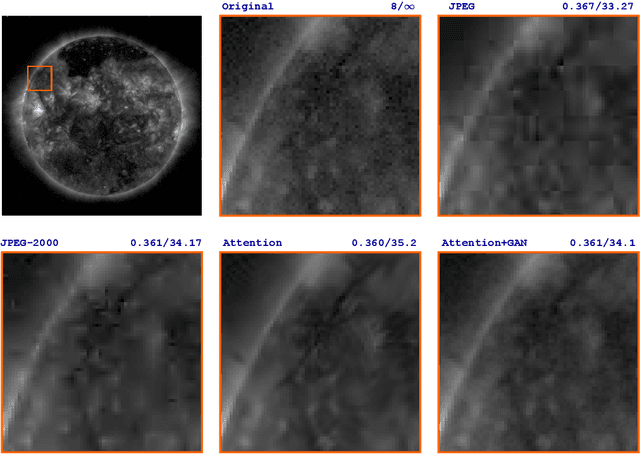

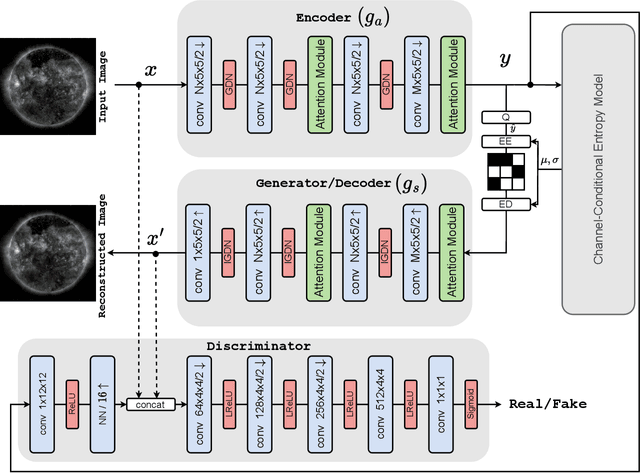
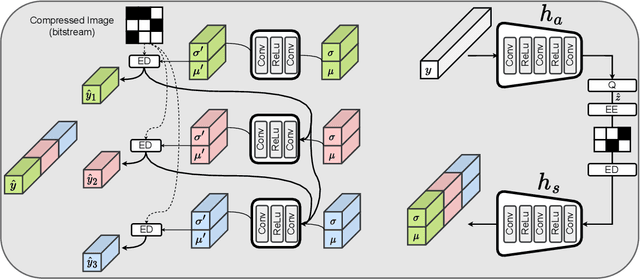
Abstract:Studying the solar system and especially the Sun relies on the data gathered daily from space missions. These missions are data-intensive and compressing this data to make them efficiently transferable to the ground station is a twofold decision to make. Stronger compression methods, by distorting the data, can increase data throughput at the cost of accuracy which could affect scientific analysis of the data. On the other hand, preserving subtle details in the compressed data requires a high amount of data to be transferred, reducing the desired gains from compression. In this work, we propose a neural network-based lossy compression method to be used in NASA's data-intensive imagery missions. We chose NASA's SDO mission which transmits 1.4 terabytes of data each day as a proof of concept for the proposed algorithm. In this work, we propose an adversarially trained neural network, equipped with local and non-local attention modules to capture both the local and global structure of the image resulting in a better trade-off in rate-distortion (RD) compared to conventional hand-engineered codecs. The RD variational autoencoder used in this work is jointly trained with a channel-dependent entropy model as a shared prior between the analysis and synthesis transforms to make the entropy coding of the latent code more effective. Our neural image compression algorithm outperforms currently-in-use and state-of-the-art codecs such as JPEG and JPEG-2000 in terms of the RD performance when compressing extreme-ultraviolet (EUV) data. As a proof of concept for use of this algorithm in SDO data analysis, we have performed coronal hole (CH) detection using our compressed images, and generated consistent segmentations, even at a compression rate of $\sim0.1$ bits per pixel (compared to 8 bits per pixel on the original data) using EUV data from SDO.
Dynamic Changes of Brain Network during Epileptic Seizure
Oct 04, 2023Abstract:Epilepsy is a neurological disorder identified by sudden and recurrent seizures, which are believed to be accompanied by distinct changes in brain dynamics. Exploring the dynamic changes of brain network states during seizures can pave the way for improving the diagnosis and treatment of patients with epilepsy. In this paper, the connectivity brain network is constructed using the phase lag index (PLI) measurement within five frequency bands, and graph-theoretic techniques are employed to extract topological features from the brain network. Subsequently, an unsupervised clustering approach is used to examine the state transitions of the brain network during seizures. Our findings demonstrate that the level of brain synchrony during the seizure period is higher than the pre-seizure and post-seizure periods in the theta, alpha, and beta bands, while it decreases in the gamma bands. These changes in synchronization also lead to alterations in the topological features of functional brain networks during seizures. Additionally, our results suggest that the dynamics of the brain during seizures are more complex than the traditional three-state model (pre-seizure, seizure, and post-seizure) and the brain network state exhibits a slower rate of change during the seizure period compared to the pre-seizure and post-seizure periods.
Context-Aware Neural Video Compression on Solar Dynamics Observatory
Sep 19, 2023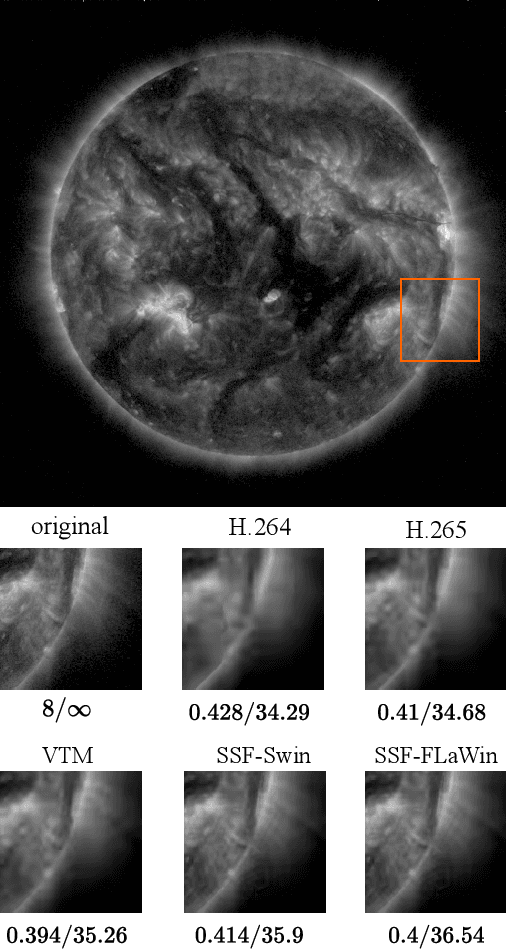
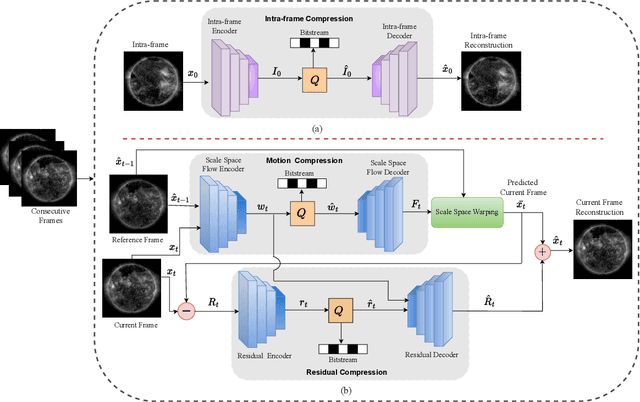
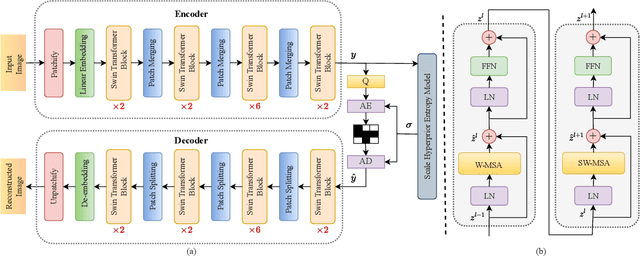
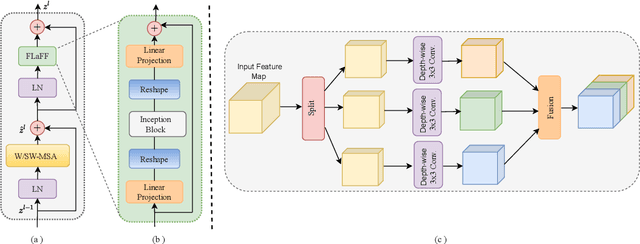
Abstract:NASA's Solar Dynamics Observatory (SDO) mission collects large data volumes of the Sun's daily activity. Data compression is crucial for space missions to reduce data storage and video bandwidth requirements by eliminating redundancies in the data. In this paper, we present a novel neural Transformer-based video compression approach specifically designed for the SDO images. Our primary objective is to efficiently exploit the temporal and spatial redundancies inherent in solar images to obtain a high compression ratio. Our proposed architecture benefits from a novel Transformer block called Fused Local-aware Window (FLaWin), which incorporates window-based self-attention modules and an efficient fused local-aware feed-forward (FLaFF) network. This architectural design allows us to simultaneously capture short-range and long-range information while facilitating the extraction of rich and diverse contextual representations. Moreover, this design choice results in reduced computational complexity. Experimental results demonstrate the significant contribution of the FLaWin Transformer block to the compression performance, outperforming conventional hand-engineered video codecs such as H.264 and H.265 in terms of rate-distortion trade-off.
Multi-spectral Entropy Constrained Neural Compression of Solar Imagery
Sep 19, 2023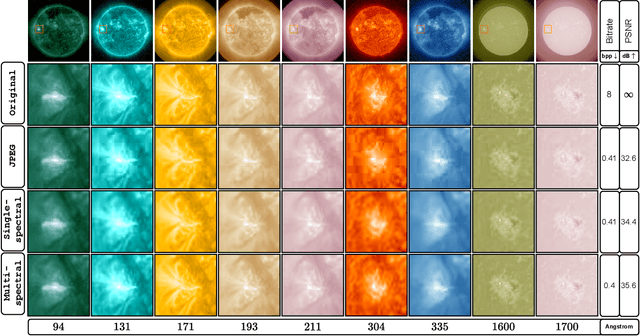

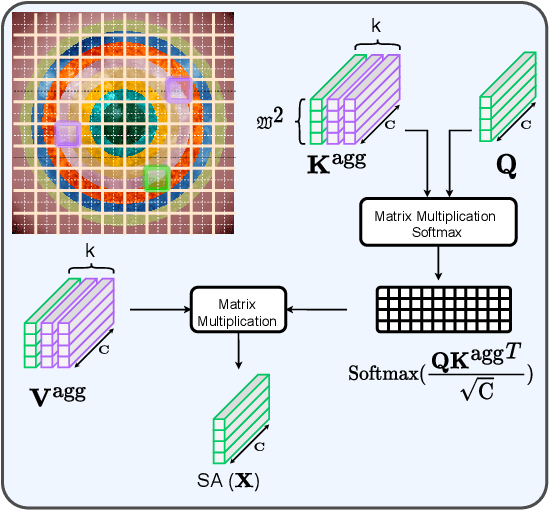
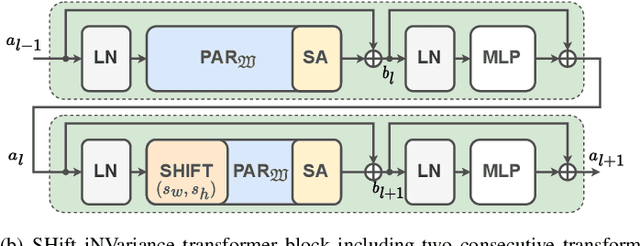
Abstract:Missions studying the dynamic behaviour of the Sun are defined to capture multi-spectral images of the sun and transmit them to the ground station in a daily basis. To make transmission efficient and feasible, image compression systems need to be exploited. Recently successful end-to-end optimized neural network-based image compression systems have shown great potential to be used in an ad-hoc manner. In this work we have proposed a transformer-based multi-spectral neural image compressor to efficiently capture redundancies both intra/inter-wavelength. To unleash the locality of window-based self attention mechanism, we propose an inter-window aggregated token multi head self attention. Additionally to make the neural compressor autoencoder shift invariant, a randomly shifted window attention mechanism is used which makes the transformer blocks insensitive to translations in their input domain. We demonstrate that the proposed approach not only outperforms the conventional compression algorithms but also it is able to better decorrelates images along the multiple wavelengths compared to single spectral compression.
Multi-Context Dual Hyper-Prior Neural Image Compression
Sep 19, 2023

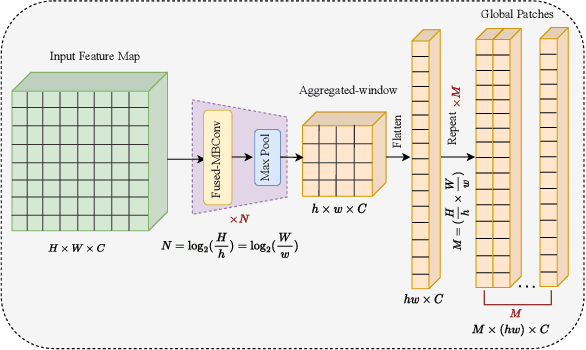
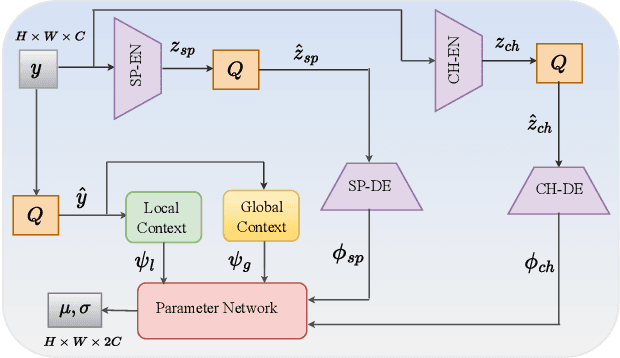
Abstract:Transform and entropy models are the two core components in deep image compression neural networks. Most existing learning-based image compression methods utilize convolutional-based transform, which lacks the ability to model long-range dependencies, primarily due to the limited receptive field of the convolution operation. To address this limitation, we propose a Transformer-based nonlinear transform. This transform has the remarkable ability to efficiently capture both local and global information from the input image, leading to a more decorrelated latent representation. In addition, we introduce a novel entropy model that incorporates two different hyperpriors to model cross-channel and spatial dependencies of the latent representation. To further improve the entropy model, we add a global context that leverages distant relationships to predict the current latent more accurately. This global context employs a causal attention mechanism to extract long-range information in a content-dependent manner. Our experiments show that our proposed framework performs better than the state-of-the-art methods in terms of rate-distortion performance.
Frequency Disentangled Features in Neural Image Compression
Aug 04, 2023Abstract:The design of a neural image compression network is governed by how well the entropy model matches the true distribution of the latent code. Apart from the model capacity, this ability is indirectly under the effect of how close the relaxed quantization is to the actual hard quantization. Optimizing the parameters of a rate-distortion variational autoencoder (R-D VAE) is ruled by this approximated quantization scheme. In this paper, we propose a feature-level frequency disentanglement to help the relaxed scalar quantization achieve lower bit rates by guiding the high entropy latent features to include most of the low-frequency texture of the image. In addition, to strengthen the de-correlating power of the transformer-based analysis/synthesis transform, an augmented self-attention score calculation based on the Hadamard product is utilized during both encoding and decoding. Channel-wise autoregressive entropy modeling takes advantage of the proposed frequency separation as it inherently directs high-informational low-frequency channels to the first chunks and conditions the future chunks on it. The proposed network not only outperforms hand-engineered codecs, but also neural network-based codecs built on computation-heavy spatially autoregressive entropy models.
Attention-Based Generative Neural Image Compression on Solar Dynamics Observatory
Oct 12, 2022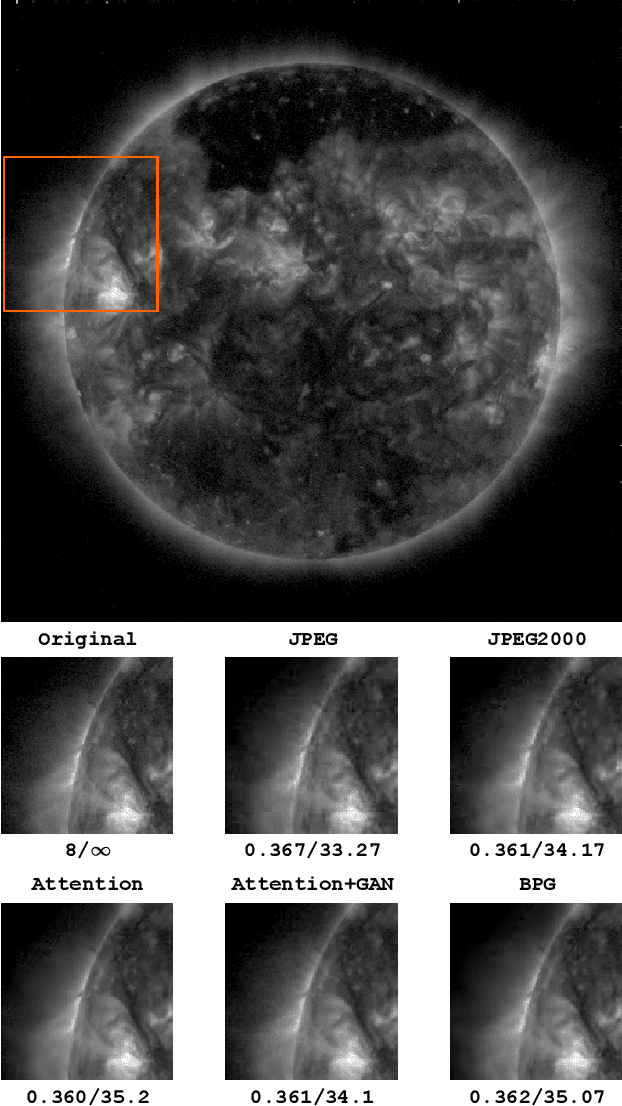
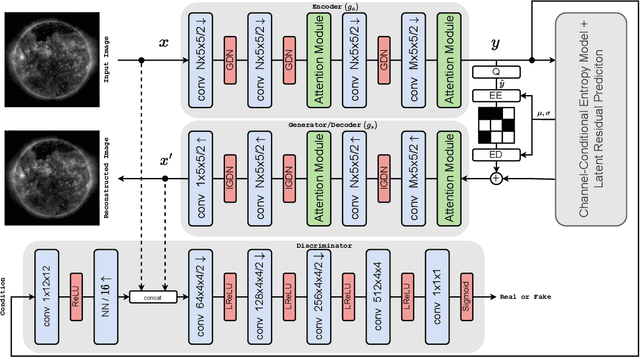
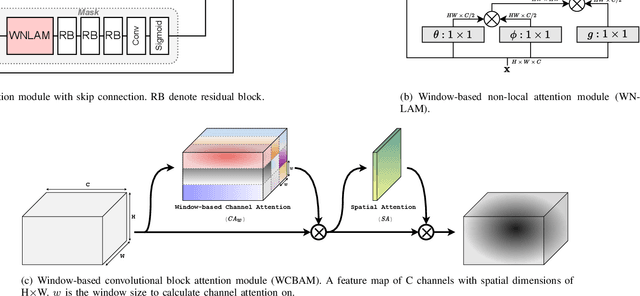

Abstract:NASA's Solar Dynamics Observatory (SDO) mission gathers 1.4 terabytes of data each day from its geosynchronous orbit in space. SDO data includes images of the Sun captured at different wavelengths, with the primary scientific goal of understanding the dynamic processes governing the Sun. Recently, end-to-end optimized artificial neural networks (ANN) have shown great potential in performing image compression. ANN-based compression schemes have outperformed conventional hand-engineered algorithms for lossy and lossless image compression. We have designed an ad-hoc ANN-based image compression scheme to reduce the amount of data needed to be stored and retrieved on space missions studying solar dynamics. In this work, we propose an attention module to make use of both local and non-local attention mechanisms in an adversarially trained neural image compression network. We have also demonstrated the superior perceptual quality of this neural image compressor. Our proposed algorithm for compressing images downloaded from the SDO spacecraft performs better in rate-distortion trade-off than the popular currently-in-use image compression codecs such as JPEG and JPEG2000. In addition we have shown that the proposed method outperforms state-of-the art lossy transform coding compression codec, i.e., BPG.
 Add to Chrome
Add to Chrome Add to Firefox
Add to Firefox Add to Edge
Add to Edge